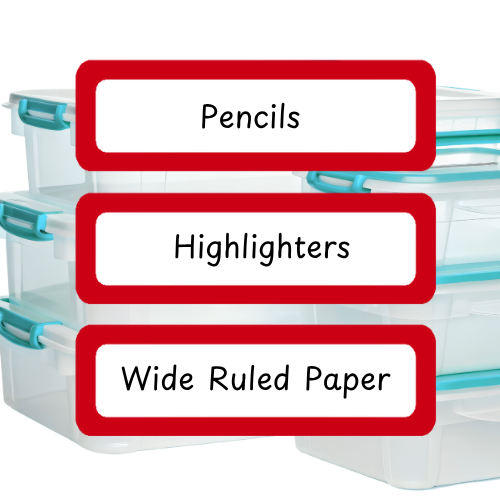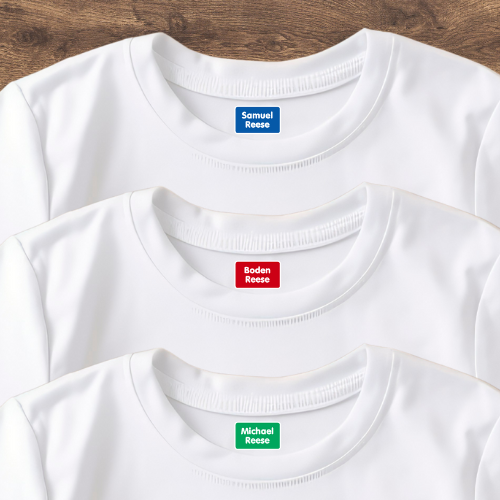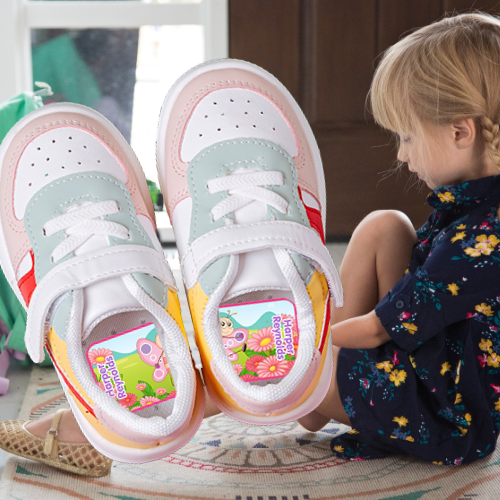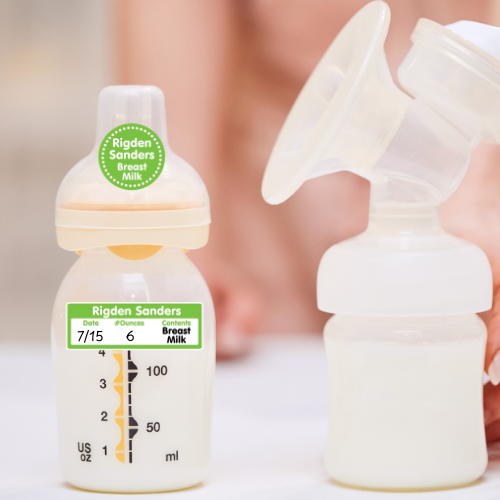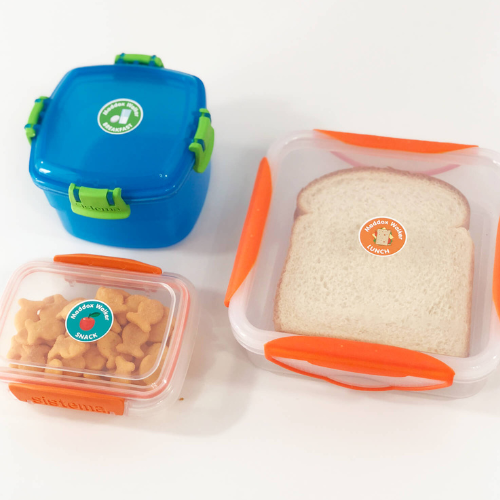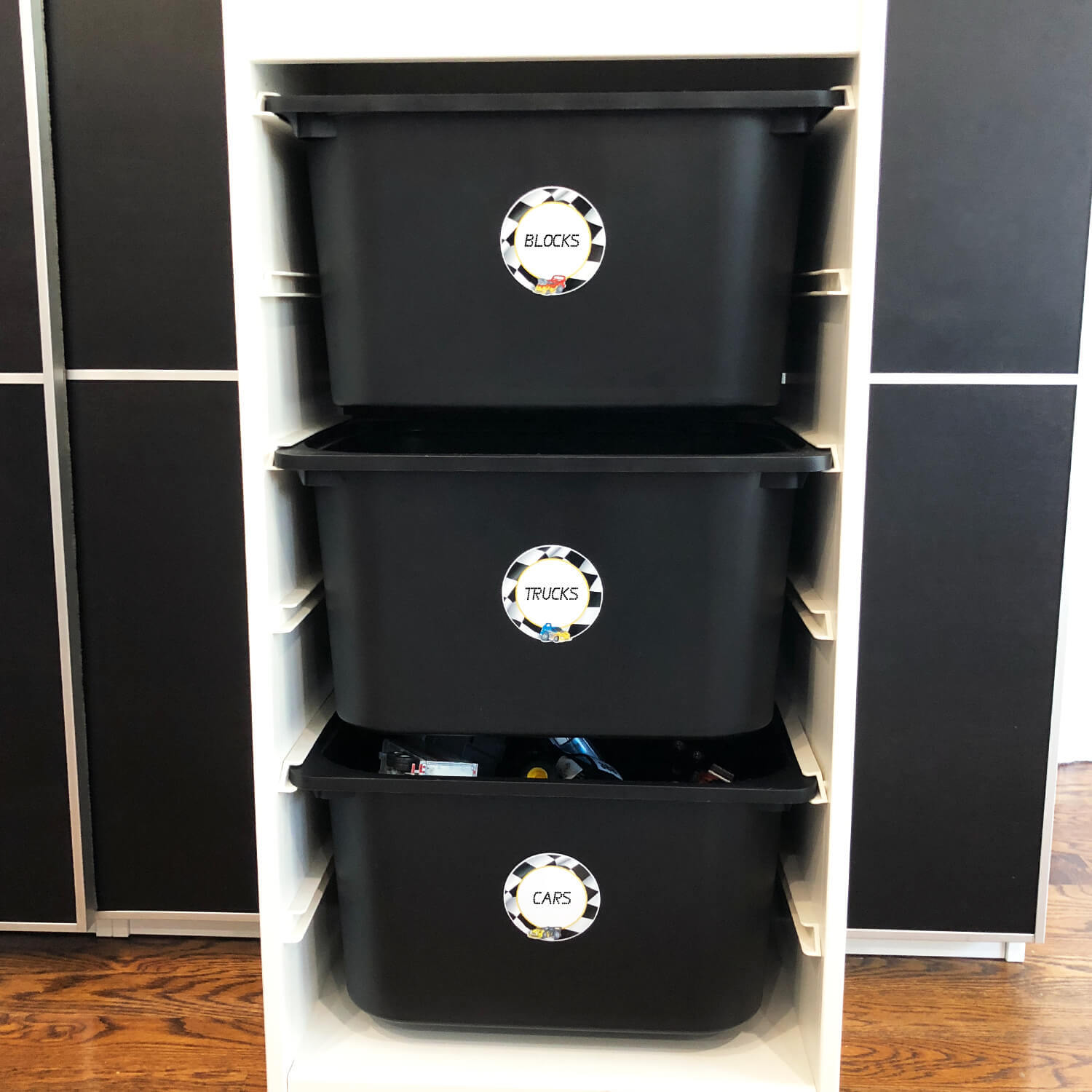Let's be honest about parenting multiple kids: having one child is manageable, two kids keeps you busy, but three or more? Welcome to the circus, and you're the ringmaster trying to keep all the acts running smoothly.
As a mom of three boys who started Sticky Monkey Labels right after my second son was born, I've lived through every stage of this beautiful chaos. I've watched my business grow alongside my family, and I've learned that the key to managing multiple kids' school needs isn't perfection—it's having systems that work even when life gets messy.
The Reality of Multiple Kids: Why One-Size-Fits-All Doesn't Work
When you have one child, you can customize everything to their specific needs. You know exactly where their backpack goes, which water bottle is theirs, and what their daily routine looks like. Add a second child, and you're juggling two different schedules, preferences, and organizational needs. But when that third child arrives? That's when most parents realize their old systems completely fall apart.
The challenge isn't just multiplication—it's the complexity that comes with different ages, developmental stages, and individual needs all happening simultaneously. Your kindergartener needs help remembering their lunch box while your third-grader is losing their jacket weekly, and your middle schooler is suddenly responsible for seven different subjects worth of supplies.
Building Your Foundation: The Command Center System
Every successful multi-child household needs a central command center. This isn't just a pretty Pinterest board—it's your family's operational headquarters that keeps everyone on track.
Essential Command Center Components:
Individual Color-Coding Systems
Assign each child a specific color that follows them throughout all their belongings. This isn't just for aesthetics—it's a visual system that works even when you're rushing out the door. Use school clothing labels in each child's designated color on jackets, backpacks, and lunch boxes. This simple system reduces the daily "whose is this?" questions by 90%.
Weekly Planning Station
Create a weekly overview where each child's activities, school events, and special needs are visible at a glance. Include spaces for noting when daycare labels need refreshing or when it's time to order new name labels for the upcoming season. Again, color code in their assigned color!
Supply Inventory System
Keep a running inventory of school supplies for each child in a central location. Different grades require different materials, and restocking becomes a nightmare without proper tracking. Use write-on labels to mark supply bins so older kids can help maintain the system.
Clothing Organization: Ending the Morning Madness
Morning clothing chaos multiplies exponentially with each child. The key is creating systems that work for different developmental stages while maintaining family-wide consistency.
The Clothing Label Revolution
Iron-on clothing labels are your secret weapon for permanent organization. Unlike temporary solutions, these labels survive countless washes and eliminate the guesswork of whose clothes belong where. For items that rotate between kids (like play clothes or hand-me-downs), stick-on clothing labels offer flexibility without permanent commitment, my go to for easily labeling and they can be applied to water bottles and other items as well.
Room-to-Room Organization
Each child's clothes should have a clear path from laundry to their room. Use clothing labels to mark not just ownership but also destination. This system is especially crucial when you have helpful older kids doing laundry and when everyone likes the same brand of athletic wear and the same color—they'll know exactly where everything belongs and you get everything to the right dresser.
Lost and Found Prevention
School lost and found bins are where unlabeled clothes go to die. School clothing labels on every piece of outerwear, gym clothes, and uniform items dramatically reduce lost items. The few minutes spent labeling saves hours of searching and money replacing lost items.
Shoe Management: Small Steps, Big Impact
Shoes are the bane of every multi-child household. They're kicked off randomly, mixed up constantly, and somehow always missing when you need them most.
Shoe Labels for Independence
Shoe stickers aren't just about identification—they're about teaching independence. When each child can quickly identify their shoes, morning routines become smoother and arguments decrease.
Left and Right Learning System
For younger children, use shoe labels that help them learn left from right. Create matching pairs with complementary designs that only make sense when shoes are on the correct feet. This educational approach turns shoe-wearing into a learning opportunity rather than a daily struggle.
Entryway Organization
Designate specific spots for each child's shoes near your main entrance. Use name labels to mark each child's shoe area, creating accountability and reducing the shoe scramble that happens when you're trying to leave.
Baby Integration: When the New One Arrives
Adding a new baby to your multi-child household requires recalibrating all your existing systems. The good news? Your older kids can actually help with organization if you set up the right systems.
Baby Bottle Organization
Baby bottle labels become crucial when you're managing multiple kids' schedules. Daycare requires clearly labeled bottles, and when you're juggling school pickup, homework help, and baby feeding, clear identification prevents mix-ups and saves precious time during bottle preparation.
Sibling Involvement Systems
Older children can help with baby organization when systems are clear and age-appropriate. Use write-on labels to mark baby supplies that older kids can help organize, creating family teamwork while teaching responsibility.
Mealtime Management: Feeding the Masses
Meal organization becomes exponentially more complex with multiple kids, different dietary needs, and varying schedules.
Lunch Container Systems
Lunch container labels should include both the child's name and meal designation. Use labels that specify "Lunch," "AM Snack," "PM Snack," or "After School Snack." This system prevents confusion during busy morning prep and helps kids grab the right container at the right time.
Snack Organization
Pre-portioned snacks in labeled containers save time and reduce decision fatigue. Buying snacks in bulk containers saves money and they're easy to put in refillable containers cutting down on waste. Snack container labels with names and timing help kids make appropriate choices and reduce the constant "what can I eat?" questions.
Hydration Station
Water bottle labels are essential for reducing dish confusion and ensuring each child stays hydrated. When every cup and water bottle is clearly labeled, kids learn to use their own items consistently, dramatically reducing your daily dish load. Make them first thing in the morning and everyone is ready for the day!
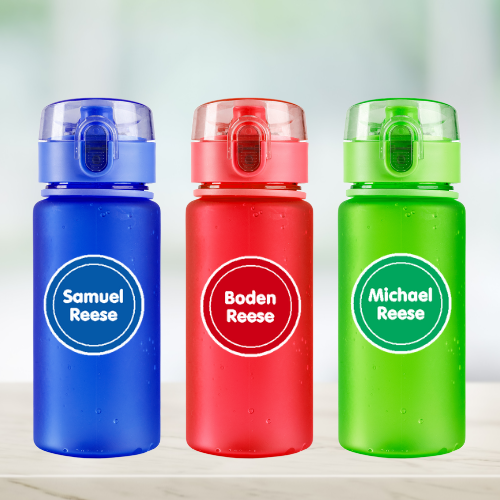
Toy and Play Area Organization
Shared play spaces become battlegrounds without clear organization systems. The key is creating ownership clarity while encouraging sharing.
Toy Bin Solutions
Write-on labels offer flexibility for toy organization that grows with your children's interests. As toy preferences change, you can update labels without replacing entire systems.
Multi-Child Sharing Systems
For toys that multiple children share, use split label sheets with multiple names. This approach acknowledges joint ownership while maintaining organization. Kids learn to respect shared items while understanding their responsibilities.
Clean-Up Training
Clear labeling teaches kids to clean up independently. When every toy has a designated, labeled home, children as young as three can participate meaningfully in household organization.
Age-Gap Management: Different Stages, Same System
Managing children at different developmental stages requires flexible systems that work for everyone from toddlers to teenagers.
Developmental Considerations
Your preschooler needs visual cues and simple systems, while your middle schooler can handle more complex organization. Use school name labels and daycare labels that work across age groups—simple enough for little ones to understand, sophisticated enough that older kids don't feel babyish.
Graduated Responsibility
As children mature, their organizational responsibilities should increase. Older kids can help maintain labeling systems for younger siblings, creating family teamwork while building life skills.
Crisis Management: When Systems Break Down
Even the best systems occasionally fail. Having backup plans and recovery strategies prevents temporary chaos from becoming permanent dysfunction.
Emergency Protocols
Keep backup name labels and school labels easily accessible for last-minute needs. When your child's water bottle label comes off the night before school, you need quick solutions that don't derail your entire morning.
System Maintenance
Regular system check-ins prevent small problems from becoming major issues. Schedule monthly reviews of your labeling systems, replacing worn clothing labels and updating write-on labels as needed.
Seasonal Transitions: Adapting Throughout the Year
School years bring constant changes—new teachers, different activities, seasonal clothing swaps, and evolving needs. Your organizational systems must adapt accordingly.
Back-to-School Preparation
Each school year requires system updates. New school clothing labels for jackets and backpacks, fresh lunch container labels for new dietary preferences, and updated name labels for changed classrooms or teachers.
Holiday and Break Management
School breaks disrupt routines, but maintaining organizational systems helps families transition smoothly back to school schedules. Keep daycare labels and school labels current even during breaks to avoid last-minute scrambles.
Technology Integration: Digital Tools That Support Physical Systems
While labels and physical organization form your foundation, strategic technology use can enhance your systems without replacing them.
Family Calendar Apps
Digital calendars help coordinate multiple schedules, but they work best when combined with physical organization systems. Your command center should include both digital and physical planning elements.
Inventory Management
Simple apps can help track when school supplies need replenishing or when clothing labels need replacement, but the physical systems remain your daily operational tools.
The Long Game: Teaching Life Skills
The ultimate goal isn't just managing your current chaos—it's teaching your children organizational skills they'll use throughout their lives.
Independence Building
When children can identify their belongings through clear name labels and clothing labels, they develop personal responsibility and self-reliance. These skills transfer to academic success and future life management.
Family Teamwork
Multi-child organization systems teach cooperation, shared responsibility, and consideration for others. When everyone knows where things belong and maintains the systems together, families function more smoothly.
Making It Work: Your Action Plan
Ready to transform your multi-child chaos into organized calm? Start with these foundational steps:
- Assess Your Current Reality: Identify your biggest organizational pain points
- Choose Your Color System: Assign each child a color that will follow them through all labeling
- Start with High-Impact Areas: Focus on items that cause the most daily friction
- Implement Gradually: Don't try to organize everything at once
- Involve Your Kids: Age-appropriate participation increases system success
The Bottom Line
Managing multiple kids' school needs isn't about achieving Pinterest-perfect organization—it's about creating systems that work for your real family in your real life. The right combination of school labels, clothing labels, name labels, and organizational systems can transform your daily experience from survival mode to smooth operation.
Remember, you're not just organizing stuff—you're teaching your children valuable life skills while reducing your own stress. Every label you apply and every system you implement is an investment in your family's daily happiness and long-term success.
The circus doesn't have to be chaotic. With the right systems in place, you can be the ringmaster who actually enjoys the show.
Ready to get organized? Check out our Ultimate School Label Pack designed specifically for families managing multiple kids' school needs. Everything you need to transform your organizational systems and reclaim your sanity.
About the Author
I'm Dodie, founder of Sticky Monkey Labels and mom to three amazing boys. I started this business right after my second son was born, and it's literally grown up alongside my family. With two kids who have food allergies and one with special needs, I've navigated every organizational challenge this article mentions—from managing multiple school supply lists to ensuring safety labels are always in place for allergy management. My kids have been my greatest teachers in creating systems that actually work for real families dealing with real chaos. When I say I understand the circus of managing multiple kids' school needs, I'm speaking from 13+ years of living it daily while running a business from Little Rock, Arkansas. Every product we create and every organizational tip I share comes from genuine experience in the beautiful, messy world of multi-child family life.


